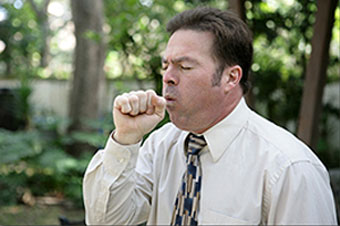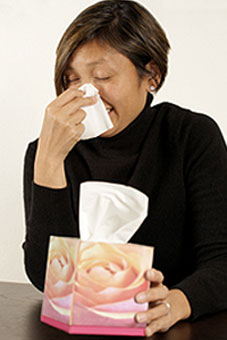Need to Know

When caring for a person, always look for possible signs of infection.
A Local Infection
A local infection is one limited to a specific body site, and stays there. An example is an infection of a surgical wound, an abscessed tooth, or a boil. The signs of a local infection include:
- The person will complain of pain at the site.
- When you lightly press your hand or fingertips over the area it will be tender to the person.
- The site will appear reddened and possibly swollen
- The site will feel warm to the touch
- An open wound or cut might weep yellowish or greenish drainage
- The person might have a fever - 100.5 degrees Fahrenheit (oral) or higher, or a rectal or ear temperature above 101.5 degrees or higher
Wound infection:
- First look at the person’s wound.
- Has the appearance changed since you last looked at it?
- Is the skin around the wound edges reddened or swollen?
- Is there any yellowish or greenish drainage from the wound?
- Does the person tell you there is discomfort when you remove the dressing?
Answers yes to any of these questions and the person could be developing an infection.
Urine Infection
Whenever you are caring for someone who is ill, make it a habit to look at their urine after they go to the bathroom. Ask the person to not flush the toilet before you get a chance to look.
- If a person has a urine infection the urine will be cloudy, dark yellow in color, and foul smelling.
- The person may have pain and burning when passing urine.
- Older adults who develop a urine infection will often become confused or more sleepy before any other signs appear.
- An elevated temperature may or may not be present

Cold, sinus infection
A person who develops a cold or has a sinus infection will sometimes cough up mucous.
- Look at the mucous. Normally it is clear, white or light yellow.
- Yellowish or greenish mucous is a sign of infection.
A Systemic Infection
Systemic infections (like the flu) are very serious. The infection has spread to affect the entire body. The body’s defenses go into action, which may cause some or all of the following:
- Fever
- An uneasy feeling of weakness
- Fatigue
- Enlarged and tender lymph nodes (may be in the neck, groin, under arm pits)
- Loss of appetite
- Nausea and vomiting
- Muscle aches
If you suspect a systemic infection, take the person’s temperature. The normal range for body temperature is 96.8º to 100.4º Fahrenheit, or 36º to 38º Centigrade.
A single temperature reading does not indicate a fever. Several temperature readings at different times of the day tell you if the person has a fever. Generally, a fever is above 100.4 degrees Fahrenheit (oral) (38° Centigrade), or a rectal or ear temperature above 101.4 degrees Fahrenheit (38.5° Centigrade).
Most doctors will not treat an adult’s fever until it is over 102.2 degrees Fahrenheit (39° Centigrade) . However, call the doctor for any fever that lasts longer than 48 to 72 hours, especially in older adults.
Sometimes an infection is not obvious
People who have diseases of their immune system (e.g. cancer, lupus, or rheumatoid arthritis) or who are taking drugs that suppress the immune system often do not have classic signs of infection. The same is true with older adults.
These people will often not have signs of redness and swelling with a local infection. Often they have no fever. Older adults may only have a mild temperature increase or no increase at all. Infection may be shown by changes in behavior such as: